Volkswagen claims XL1 is "the most efficient production car in the world"
German auto brand Volkswagen's XL1, which it claims is the most fuel-efficient production car ever made, has been named the winner of the Transport category at Designs of the Year 2014.
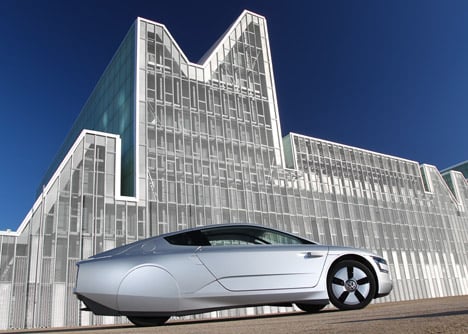
Volkswagen's XL1 consumes just 0.9 litres of fuel per 100 kilometres thanks to its aerodynamic design, low weight and hybrid diesel-electric engine.
The two-seat car also makes use of innovative technologies including cameras that replace the wing mirrors to reduce its drag and consequently enable it to achieve low carbon dioxide emissions of 21 grams per kilometre.
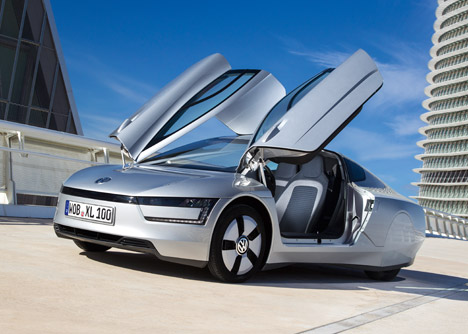
"The only reason that this vehicle could be built is because the limits of what is feasible both in terms of the technologies utilised and the manufacturing method were redefined," said Volkswagen in a statement release when the car launched last year.
The company's goal with the XL1 was to develop a functional and desirable production car that achieved a fuel consumption of one litre per 100 kilometres.
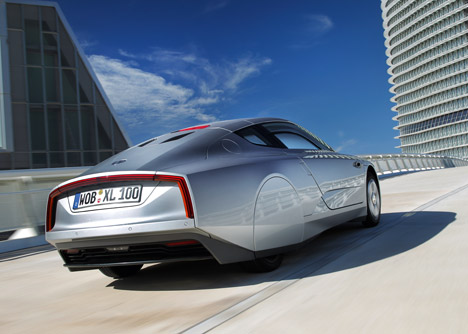
Previous prototypes featuring a single-file seating arrangement evolved into the more practical and familiar configuration of adjacent but slightly offset seats adopted for the XL1.
The teardrop-shaped bodywork is a classic of aerodynamic design and enclosed rear wheels add to the car's futuristic aesthetic, while its low height and scissor-opening wing doors are reminiscent of supercar styling.
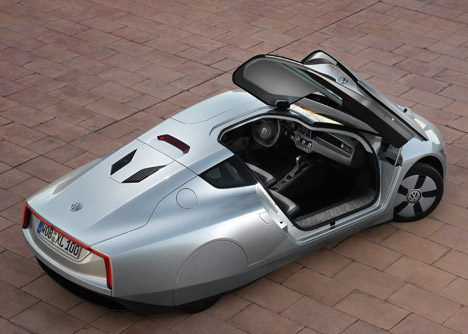
"The XL1 is an automotive hero that follows pure sports car design principles: low weight, perfect aerodynamics and a low centre of gravity," said Volkswagen.
Composite materials have been used throughout the design to achieve an overall weight of just 795 kilograms.
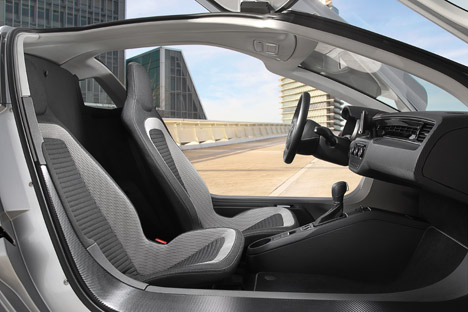
The body is predominantly made from carbon fibre reinforced polymer, which is around 20 percent less dense than steel and equally strong.
Its lightweight construction means the XL1 can accelerate from 0 to 100 kilometres per hour in 12.7 seconds and is able to cruise at 100 kilometres per hour while using just 6.2 kilowatts of energy.
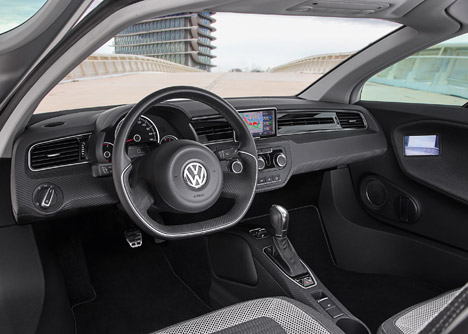
The car can travel up to 50 kilometres in pure electric mode, which results in zero carbon emissions.
Having achieved the one-litre target set out at the turn of the millennium, the Volkswagen Group now plans to implement some of the innovations developed for the XL1 across its other car brands.
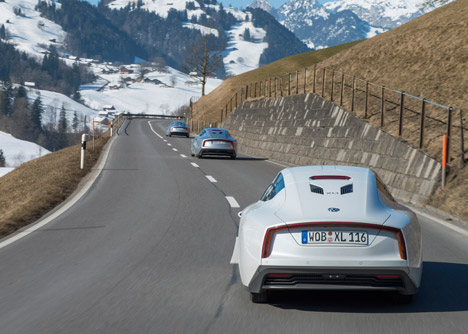
The other finalists for Designs of the Year 2014 include an instrument with soft silicone keys that can control the pitch and volume of the notes, a public art project that depicts the shadows of military drones, and Zaha Hadid's curvaceous Heydar Aliyev Center.
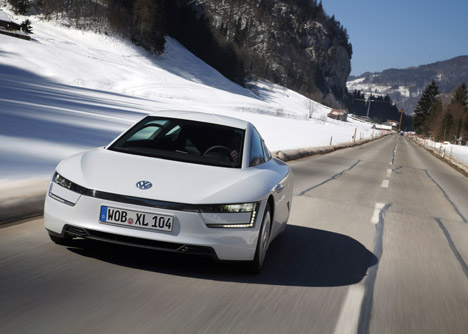
Dezeen is media partner for Designs of the Year 2014, which is organised by London's Design Museum. The overall winner will be announced at St Martins Lane Hotel in London on 30 June.